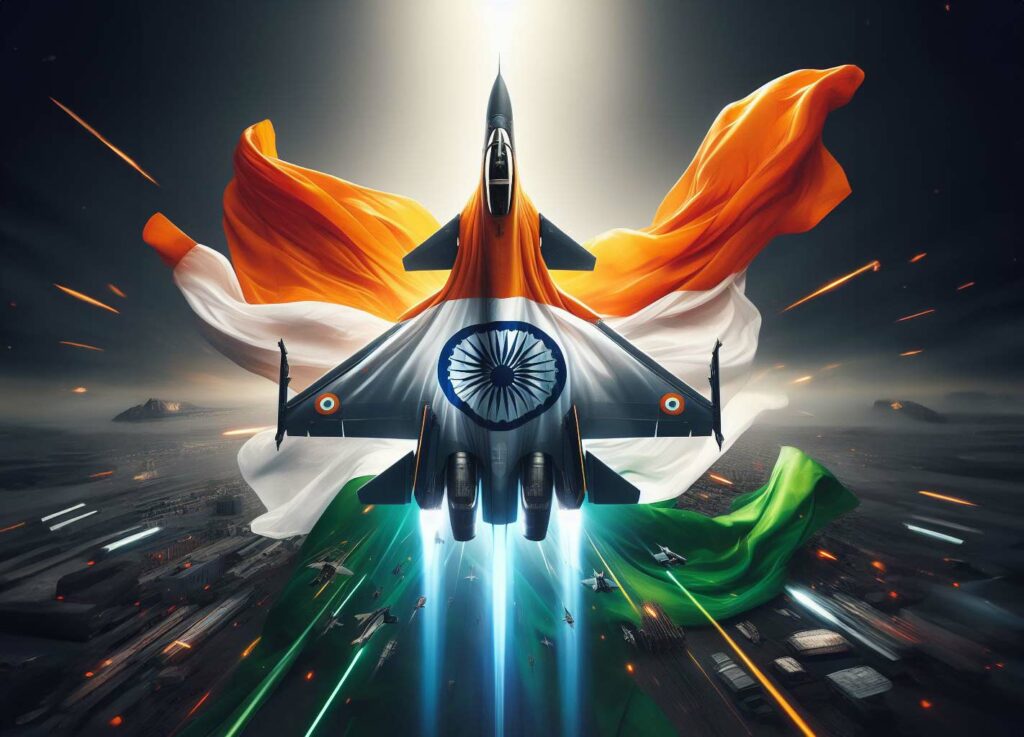
India advances in air defense with AMCA, aiming to join the global elite in fifth-generation stealth fighter technology.
India has taken a decisive step towards strengthening its aeronautical sovereignty by approving the development of the Advanced Medium Combat Aircraft (AMCA), a fifth-generation deep fighter jet. This project illustrates the country’s commitment to establishing an autonomous presence in the advanced air combat technology sector, where only a few countries, such as the USA, Russia and China, have succeeded in developing fifth-generation stealth fighter jets.
OMAC: a strategic ambition for India
The OMAC project represents a significant step forward for the Indian Air Force (IAF), marking a transition to a state-of-the-art indigenous air combat capability. With an initial investment estimated at 15,000 crores of rupees, AMCA embodies India’s aspiration to strengthen its autonomy in defense and align itself with world powers possessing sophisticated stealth fighter technologies.
Global context and Indian ambition
The OMAC initiative places India on the map of nations developing advanced air combat technologies. The project underlines India’s determination not to rely exclusively on imports, but to foster in-house innovation and technological development, aligning its capabilities with those of world leaders in stealth fighter technology.

AMCA collaboration and development
Collaboration between the Aeronautical Development Agency (ADA) and Hindustan Aeronautics Limited (HAL), supported by private industry, is crucial to the realization of OMAC. The joint construction of five prototypes symbolizes a strategic partnership between the public and private sectors, essential for the success of the program.
IAF capacity building
The AMCA project is vital to meeting the IAF’s long-term requirements, as it seeks to modernize and diversify its arsenal with state-of-the-art, multi-role aircraft. The successful development of the LCA Tejas has reinforced India’s confidence in its ability to undertake ambitious aeronautical projects, paving the way for AMCA.
Tejas: a pioneering platform
The Tejas, designed by HAL, is already a robust platform, underlining India’s capabilities in the field of combat aviation. Its success is a key milestone that has paved the way for the development of MCAA, demonstrating India’s potential and expertise in advanced aeronautical technology.
Acquisition of multi-role fighters
In parallel with the MCAA project, the IAF is planning to acquire 114 multi-role fighter aircraft (MRFA), one of the world’s largest military procurement programs. This move illustrates the IAF’s overall strategy to enhance its fleet and defense capability, while underlining the importance of diversifying its air assets to meet contemporary security challenges.
Future prospects
India’s commitment to the development of OMAC is a strong signal of its ambitions to become an independent and innovative aviation power. By aligning its initiatives with global defense trends and capitalizing on the success of earlier projects such as the Tejas, India is strategically positioning itself for a future where its air defense is robust, diversified and technologically advanced.
The OMAC project symbolizes a transformative step for India, not only in terms of defense capabilities, but also in asserting its status as an innovative power in the aeronautical field. In line with the IAF’s long-term objectives, this project promises to position India among the world leaders in stealth fighter technology, strengthening its strategic position and sovereignty in the international arena.
War Wings Daily is an independant magazine.